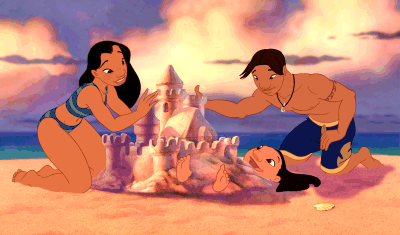
In 1937, Disney's endearingly helpless Snow White cooked, cleaned and sang her way into the hearts of seven protective men and then slept her way into a happily ever after. Giving due props for the breathtaking animation, Snow White's reliance on heroic male figures to solve all of the naïve princess's problems will naturally prompt eye-rolling from feminists still riding the ripples of wave two. Before unleashing angst and anger at Disney, don't we have to acknowledge that Snow White is surely a far cry from the hardworking grit and psychologically complexity of Tiana, the heroine of Disney's most recent “princess” movie? Even though Tiana has a song sequence that basically accompanies her cleaning up an old mill, she's inspired by her own ambition instead of by the saccharine goodness of her squishy heart. Disney has certainly attempted to respond to cultural shifts in how America understands gender roles and romantic relationships. The question is: have these changes been sufficient?
There are several controversies surrounding The Princess and the Frog (2009), and I think two of them are particularly arresting. The lighthearted manner with which the writers treat “voodoo” elides the religion's cultural history and uses it as a near synonym for dangerous magic. In addition, Tiana, Disney's first black princesss, spends a decent chunk of her own movie as a frog. Disney's endeavor to be more “culturally responsible” sort of falls flat in a few places, and the ongoing obsession with Barbie-shaped women who wind up married irked, especially after the breakthrough promised by Lilo and Stitch (2002). While I'm in no position to comment on whether or not Lilo and Stitch successfully and sensitively creates a culturally-conscious Hawai'i (and would be quite interested in the thoughts of others), I do think that the movie's treatment of gender leaves all other Disney movies in the dust. I say all in order to not-so-subtly prompt disagreement, but after roughly a day of brainstorming, I can't think of one other animated Disney film that includes so many female characters and passes the Bechdel test with flying colors. I even harbor a suspicion that Lilo and Stitch tactfully comments on what I'll call the “Prince-Charming-Cure”: the Disney deployment of romance as a deus ex machina for all of life's problems.

Snow White and Aurora are saved with a kiss, Ariel's happy ending relies on getting a strange man to smooch her after three days in his company, and Belle liberates herself by falling in love with her captor. The Lilo and Stitch version of Prince Charming, on the other hand, swoops in right when all appears lost, when Nani has lost every chance of finding employment and it looks as though their small family is about to be split up. Instead of fixing the issue, though, he can do little beside give the sisters a brief reprieve from their troubles by going surfing with them. This simultaneously undermines the Prince-Charming-Cure while emphasizing the importance of relationships. Any one connection can never magically fix all your problems, but it can certainly help you work your own way through them. Let's get symbolic, shall we? While Prince Charming might carry Snow White away to his castle in the sky, a veritable heaven attainable only by fairytale romance, the sandcastle David helps Lilo and Nani build has more real-world relevance. It might be temporary, but at least it's comforting.
Recent comments
2 years 29 weeks ago
2 years 44 weeks ago
2 years 44 weeks ago
2 years 50 weeks ago
3 years 4 weeks ago
3 years 4 weeks ago
3 years 4 weeks ago
3 years 6 weeks ago
3 years 6 weeks ago
3 years 6 weeks ago